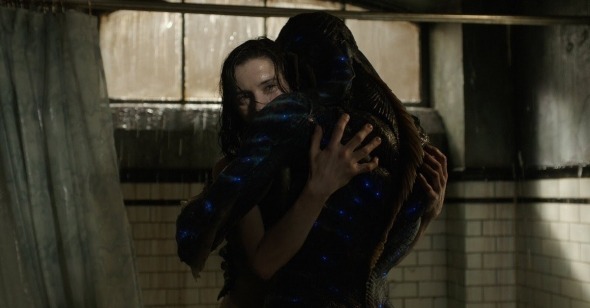11 Offenses of 2017
André Bazin once asserted, “Photography is clearly the most important event in the history of the plastic arts.” He may have changed his mind if he lived long enough to see The Lovely Bones. If nothing this past year reached the ecstatic lows of that worst-movie-of-the-century-so-far (and honorary 2009 Reverse Shot Offense), there were still enough bottom-scrapers—and hopping mad writers willing to dredge up their moviegoing traumas—to supply our annual 11 Offenses column with the proper stench. In fact, compiling the list was easier than it’s been in years—apt, perhaps, for a 2017 that any thinking person would want to leave on the trash-heap of history.
[Capsules by Julien Allen, Nick Davis, Michael Koresky, Chloe Lizotte, Violet Lucca, Aliza Ma, Adam Nayman, Nicolas Rapold, Jeff Reichert, and Chris Wisniewski.]
The Shape of Water
Agonizingly banal juvenilia or new art-house classic? It’s so hard to tell the difference these days. The Shape of Water finds Guillermo del Toro again wedging one of his Famous Monsters of Filmland freaks into a half-baked drama, this time a sixties-set, Tim Burton-y tale about fragile, beautiful outcasts: a mute, misunderstood janitor (Sally Hawkins) at a top-secret government facility; the scaly, misunderstood fish-man (Doug Jones) she falls for and helps escape from the lab; the sweet-souled, misunderstood gay neighbor (Richard Jenkins) who helps her hatch her plan. Offering support are Octavia Spencer’s wise fellow janitor and Michael Stuhlbarg’s inside-man Soviet spy. Bearing the burden of standing in opposition to all of these delicate creatures is Michael Shannon (already a parody of himself so early into his career) as a sadistic government agent who angrily glares at his apple-cheeked nuclear family when not cattle-prodding amphibious sweethearts into submission. Del Toro’s filmography has always been predicated upon gratuitousness, whether of violence or sentimentality, and The Shape of Water has both in spades, from its hyperbolic gore (Shannon dragging Stuhlbarg around by crooking his index finger through a gaping bullet hole in his cheek) to its vapid flights of fancy (a risible Astaire-Rogers dance fantasy) to its nudge-nudge sprinkles of manufactured Visual Poetry (not to be confused with actually beautiful compositions, of which there are none). Aside from the fact that every single plot beat will come as a surprise to no one who has ever seen a movie before, what’s truly offensive is the essential retrograde impulse of the whole project: its needless Cold War setting seems to function only as a protective cover to indulge in social stereotyping, prefab aesthetics, and outmoded sexual politics. It’s sad that this sludge becomes an Oscar front-runner while another film about the rescue of an innocent creature from the clutches of governmental sadism, Bong Joon-ho’s emotionally ravaging Okja, languished, despite the fact that the latter was an engaged political work with a genuine point of view. Never forget that The Shape of Water won the Golden Lion at the once essential Venice Film Festival—the final insult to film culture. —MK
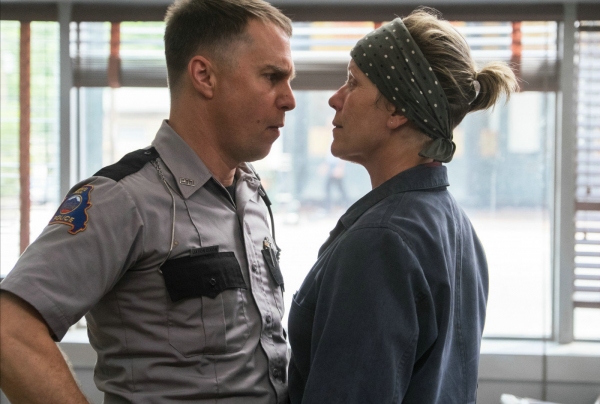
Three Billboards Outside Ebbing, Missouri
Like, way outside. Despite tossing “Missouri” into its title, Three Billboards demands absolution from any fidelity to actual times or places. The wobbly accents, disjointed spatial relations, vague socioeconomic milieu, and catastrophic ignorance and appropriations of blackness leave no other option. Sadly, the movie feels incoherent even on its own hermetic, rhetorically extravagant terms. It’s not for lack of potential: the catalyzing act by Mildred (Frances McDormand) furnishes a provocative premise, and the script charts her a gutsy course from principled protest to a reckless pursuit of vengeance—any vengeance. As written, she’s as debased as the local cohort. But along the way, writer/director Martin McDonagh seems to have fallen in love with her, and even more queasily with Sam Rockwell’s moronic bigot police deputy. Thus, while McDonagh’s language flaunts his ardor for flippant brutishness, his awkward, indulgent direction only seems tough. From images (a stumbling-block throughout) to edits to song cues to performance choices, Three Billboards finds copious ways to cushion its story and protagonists from the harsher judgments they deserve. Anchoring an ensemble that teems with blatant affronts (the humiliated “midget,” the idiot child-bride, the Black Friend, the other Black Friend), Mildred lands more forcefully but dangerously as the Gordon Gekko of civic ire, a charismatic vigilante sold as an antihero, give or take the “anti.” —ND
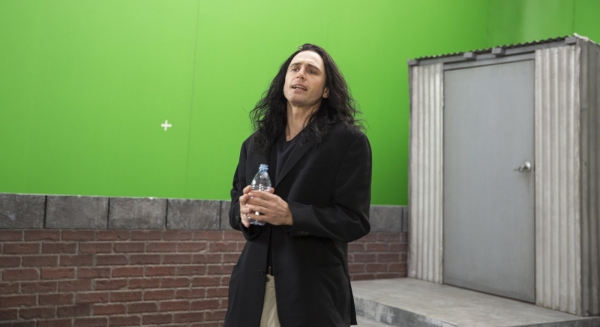
The Disaster Artist
There’s something exploitation-proof about The Room’s poète maudit Tommy Wiseau, whose magnum opus is an autobiographical cryptogram, but The Disaster Artist isn’t exactly about him. Instead, James Franco absorbs Wiseau’s life force into a 104-minute, technically exacting impression of his ambiguously Eastern European accent and idiosyncratic syntax, all played for laughs. The result is less of a film than an insensitive, feature-length meme, which is to say, hollow scaffolding for Franco to stroke his own ego. But lest ye forget, The Disaster Artist is also a modern-day underdog parable, shouting “Believe in Your Dreams!” as it shatters the high/low art dichotomies that still drive us crazy in 2017. Even the most cursory skim through The Disaster Artist’s source book—The Room co-star Greg Sestero's chronicle of his unlikely friendship with Wiseau, rendered as a cross between Sunset Boulevard and The Talented Mr. Ripley—reveals a story far thornier and bizarre than Scott Neustadter and Michael H. Weber's aggressively one-note adaptation, which eventually sidelines not just Sestero (little brother Dave Franco—cool, meta!), but everyone and everything else that isn't grating antic comedy. Above all, Franco constructs the film as a checklist of painstaking recreations for Room acolytes, and worse still, he accidentally bumps into a more interesting alternate film: before the credits roll, he juxtaposes scenes from The Room alongside his own shot-for-shot reproductions in a jarringly off-sync split-screen montage, a sequence that almost hits some sort of nerve about cultural regurgitation. Almost. One thing is certain: Franco’s Beau travail-aping dance to Corona's “Rhythm of the Night” is a sad, even desperate, substitute for the utter fire of Wiseau’s repurposed James Dean battle cry that Lisa is tearing him apart. —CL

The Killing of a Sacred Deer
At Cannes this year, Colin Farrell supplied the face of fully justified male comeuppance: no less than two award-winning competition titles found the actor playing men hoisted—if not impaled—on their own petards. Thematic similarities aside, neither Sofia Coppola’s cautious remake of The Beguiled nor Yorgos Lanthimos’s putatively Greek-mythic The Killing of a Sacred Deer is a particularly urgent or invigorating movie. Rather, they’re both exercises in style by limber filmmakers working from well-developed muscle memory. And their intermittent skillfulness is as indisputable as it is ultimately beside the point—the absence of a point being the true common denominator here. Where The Beguiled’s failures seemed to me wholly predictable—the collateral damage of trying to tangle with a robust artsploitation classic and coming up well short—The Killing of a Sacred Deer disappointed, even on its own terms. For the first time since his 2009 breakthrough Dogtooth, Lanthimos failed to convince me that his little-theater-of-cruelty setup had much utility beyond sucking up international coproduction financing. There’s neither pleasure nor edification in seeing Farrell’s scummy pater squirm while his (of course outwardly stable, secretly fragile, wholly corruptible) suburban household suffers at the whims of a vengeful millennial troll (Barry Keoghan, admittedly pretty creepy). The film’s jerry-rigged, Twilight Zone scenario isn’t suggestive or disturbing; it’s silly, made even more so by the Steadicam solemnity of the presentation . . . and I refuse to accept that this disjunction is, in fact, The Point. The would-be-indelible climax, in which our Bad Dad must decide which one of his hogtied family members to murder with a shotgun—lest they all expire gruesomely from forces beyond their control—is meant to evince some complex moral calculus. It comes off, though, as the grandstanding of an artist with nothing better to do than shoot fish in a barrel. —AN

Rat Film
In 1967, Godard announced that his Weekend was a film “found on the trash-heap.” This was, of course, a joke to misdirect audiences dropped in the midst of one of his most potent statements. Forty years later, we have a true garbage movie: Rat Film, yet another compilation of collected bric-a-brac (or, as some might call it, a work of "formal invention"), which actually begins with a shot peering into a trash can. When settling in for an essay film, my hope is for an experience created by a filmmaker who knows much more than I do about a given subject, and who presents a wide variety of aural and visual material from which, over time, one can draw some unexpected, intriguing conclusion. Theo Anthony’s Rat Film, though, after 80 or so minutes of punky Sturm-und-Drang hyperventilation, clued me in, with no small amount of self-satisfaction, as if it had uncovered the secret key to everything: poverty in contemporary Baltimore has historical and geographic determinants. Well, I’ll be! Arriving at an obvious, generally-understood-by-any-th
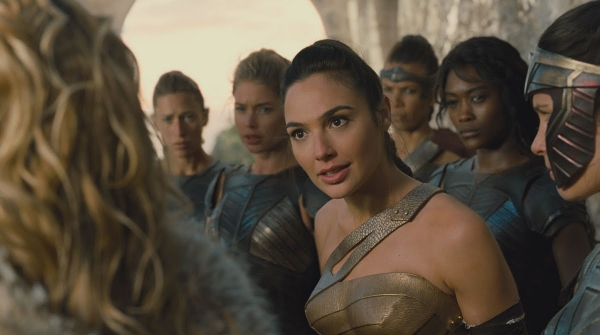
Wonder Woman
Wonder Woman begins with a flashback to Themyscira—a supposed hidden paradise and the utopia from whence the titular woman of wonder (Gal Gadot) hails. The film goes to great lengths to contrive a sense of the picturesque, with quasi-Grecian constructions setting a backdrop for the statuesque warrior women to exhibit their fighting skills in skimpy leather minis, gilded corsets, and…fur collars? I have no qualms about the gaudy (if slightly Trumpian) excess of the production design, which would have even sent the late Gianni Versace running for the hills. This would normally have been welcome in a superhero comic book universe, but the elaborate set is muddied by poor photography and flat lighting, and is bolstered by didactic voiceover narration and a desperate orgy of slow-motion CGI that give the scenes a cheap velvet painting diorama effect. Themyscira is meant to contrast against WWI-era London, where Wonder Woman travels to save the world from Ares, the god of war, but which somehow manages to appear almost equally abject. To see Wonder Woman—a Hollywood product that has the coldness of something made by surveys and algorithms, and which features dialogue like “I’m a good guy; they’re bad guys. I’m a spy”—touted as both a masterpiece of filmmaking and an embodiment of female empowerment has been one of the most alienating experiences of my adult life. These times of crucial social change demand closer scrutiny of the connections between bigotry and chauvinism and artistic defect, and give more cause to celebrate the work of women filmmakers. However, to ignore basic tenets of storytelling in a visual medium in order to project personal, political, or emotional ideas onto an empty silo such as this is an act of pure cynicism and an insult to the history of the art form. And don’t forget: every ticket purchased padded the pockets of Steve Mnuchin. —AM

Victoria & Abdul
What the blazes has happened to Stephen Frears? Once an assistant to the great leftist filmmaker Lindsay Anderson (on If…), he would have spat on every frame of this vapid heritage trash. Halfway through Victoria & Abdul, one finds oneself wishing the director of My Beautiful Laundrette—a properly daring interracial love story—had really swapped sides, and delivered a genuinely radical revisionist tract about the cultivating value of the British Empire, rather than this insipid, Horlicks-fueled nightmare, which has its cake, eats it, vomits it out then tries to eat it again, even though it tasted terrible in the first place. In a politico-cinematic statement seemingly designed to appeal to Rex Reed and absolutely no one else, Queen Victoria (Judi Dench) takes a fancy to an Indian functionary (Ali Fazal, whose own headwear has more charisma) who assists in her jubilee celebrations, retaining him as her personal secretary (her “Munshi”), despite the predictable monocle-dropping, spluttering objections of the rest of the royal household. With a combination of pathological banality and staggering insensitivity, any questions pertaining to British colonialism are fractionally distilled down to a spoiled, racist Prince Albert (Eddie Izzard) and a grumpy speech by Adeel Akhtar, one of the BBC’s finest contract actors, in a nothing role as the Munshi’s unsympathetic friend. Dench (excellent, obviously) will live to fight another day, whereas poor Tim Pigott-Smith (RIP) was ushered to his grave by a feeble joke about an overripe mango. As for the story itself, the royal family buried it deep underground for 100 years. Frears has exhumed it and put two bullets in its head for good measure. Never mind whether Twin Peaks was the best film of the year, this pipe-and-slippers Tory bilge was 2017’s worst TV. —JA
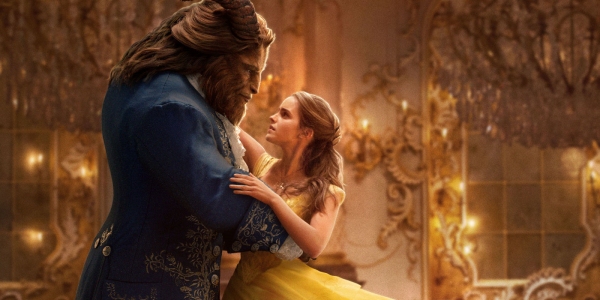
Beauty and the Beast
It may be the second worst film of the year based on the old beauty and the beast parable (see The Shape of Water), but Disney’s dead-horse “live-action” redo of one of its most beloved animated properties stands alone as the single most excruciating cinematic experience of 2017. This soulless, hugely successful cash grab is to the hand-drawn original as Amazon is to Barnes & Noble, a culture-swallowing giant so all-consuming it makes one forget that the only relatively innocent forebear was also a corporate entity itself—in Disney’s case one that has been spelling doom for decades (witness its Fox takeover and further monopolizing of the entertainment industry). Beyond that, it’s just a wretched movie musical, visually chopped into non-choreographic, rhythm-less oblivion and poorly sung by its wispy-voiced main cast (next to the auto-tuned embarrassment of Emma Watson as Belle and growly macho pageantry of Luke Evans as Gaston, the wobbly Emma Stone and Ryan Gosling are Jo Stafford and Mel Tormé). Over-designed, over-directed, and over-acted—except by the perennially under-performing Watson—this horrendous movie-shaped product, nominally directed by hack Bill Condon, makes its viewers feel like they’re stuck inside the cryogenically frozen head of the studio’s long-expired namesake: all enchantment is drained away to make room for the kind of amped-up, gravity-free, CGI spectacle that is turning future generations into sensation-immune zombies. —MK

City of Ghosts
In some ways, City of Ghosts is a prestige-cause doc, a category of film that expects praise on the merits of its topic alone. But acclaimed director Matthew Heineman comes to his subject—the Syrian journalists of Raqqa Is Being Slaughtered Silently—after making the investigative doc Cartel Land, which raised some eyebrows for the bravado of its risk-taking and its hidden-mike exposés in violent Mexican hinterlands. Cartel Land bore a hint of insistence on Heineman’s bona fides as a tough journalist—and City of Ghosts fulfills that promise at least: the work of someone who seems to really want you to know he’s hardcore and deserving of the honorific “acclaimed.” In his new documentary, the filmmaking feels like an afterthought; City of Ghosts comes across more of a presentation device than a film. Because the journalists of RBSS must work in secret, we keep returning to people and laptops in a room; the rest of the runtime is filled with sometimes gruesome archival footage and ISIS propaganda designed to stun you into submission. There’s an attempt at setting out a structure as the journalists are introduced, only to have their lives shamelessly milked for their grief and terror over horrific episodes involving their friends and family. Heineman bookends City of Ghosts with an American awards ceremony where the journalists receive honors—a stage-setting move that partly drives home their importance but also feels like an effort to put a seal of approval on the film. Since its release (following a mixed Sundance reception), City of Ghosts seems to have muscled its way into the film world’s own awards competitions whenever and wherever possible . . . nearly elbowing out a far more deserving film on the area’s conflict, Last Men in Aleppo, by Syrian filmmaker Feras Fayyad. —NR
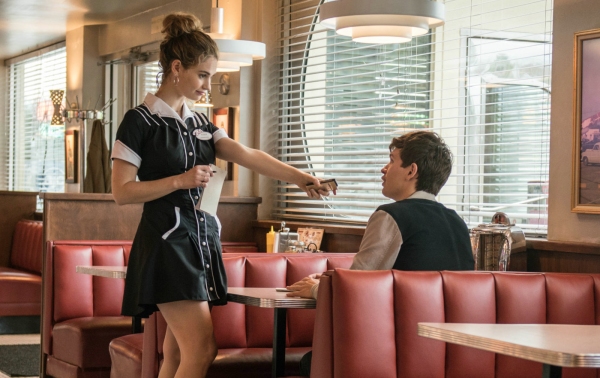
Baby Driver
Edgar Wright has great taste in music. He wants us to know this, and so, after an establishing shot, Baby Driver opens on Ansel Elgort’s titular Baby (WTF?), his hand on an iPod, turning on a Jon Spencer Blues Explosion song to which he will lean, tilt, and swirl while, eventually, steering a team of bank robbers to safe haven in an admittedly virtuosic car chase sequence. After the heist, one of the thieves asks criminal mastermind Doc (Kevin Spacey), “Is he retarded?” Doc dodges the question, “Retarded means slow. Is he slow?” Clever, but he doesn’t sufficiently settle the issue, which turns out to be very much at the heart of the matter. Too many self-respecting critics loved Baby Driver. And why not? It’s easy to confuse craft with competence when the reward for the viewer is to feel smugly hip. (Dude, it’s, like, a killer soundtrack.) So, what’s wrong with Baby Driver, beyond an uncommonly large (and final?) serving of Spacey ham? There’s the cipher protagonist, of course, and there are also the dubious depictions of non-white characters, especially an ill-served Jamie Foxx who plays a character named, if memory serves, Bad Criminal Black Man, and who is gifted the film’s goriest death. For this unhip viewer, who preferred a stodgy Emily Dickinson biopic to this totally awesome genre flick, the whole thing veers from bad to unforgivable in the romantic subplot involving the beautiful waitress (Lily James) who may or may not have an inner life but nevertheless falls head over heels for the in-every-way-uninteresting Baby, and who stands by her man despite hell, high water, or years of imprisonment. Who can blame her? He has, after all, really good taste in music. Baby Driver once again proves that feminism, racial sensitivity, character-driven storytelling, and basic intelligence hardly matter in film culture if a movie can make you feel cool. The music is great. —CW
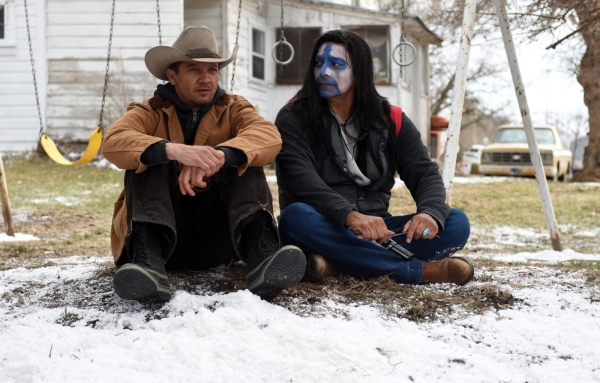
Wind River
Taylor Sheridan is now three-for-three in pissing me off. When last we left our hero, he was collecting laurels and an Oscar nomination for his script of Hell or High Water, a glib little thriller praised by many for its “resonance” (it has, like so many movies of the moment, evaporated completely from the film-cultural consciousness). There, as in Sicario, Sheridan flashed a dubious social conscience by using non-white characters as collateral damage and affecting the tonal equivalent of a manful grimace. For his directorial debut, Wind River, he teams Wildlife Service tracker Jeremy Renner with FBI agent Elizabeth Olsen to avenge the rape and murder of a Native American woman on a Wyoming Indian Reservation. The formula works: suffice it to say that both of these drably generic white leads (he’s got dead-daughter guilt; she’s a by-the-book rookie) achieve catharsis and empowerment by solving the crime while the film’s indigenous characters graciously (and helplessly) vouchsafe their accomplishments. Such representational laziness is hardly uncommon in American cinema, of course, and the devil’s advocate argument that Sheridan is at least gesturing in the direction of a grim social reality is not completely off-base. But good intentions often make for uncomfortable viewing, and so it goes here. Even leaving aside the mechanical aspects of Sheridan’s plotting, there’s a sense that all this ruthlessly evoked trauma—and the larger problems it signifies—is just a pretense. For what, you ask? Well, Sheridan does like his florid tough-guy poetry and deploys it in nearly every scene. “This is the land of you’re-on-your-own,” rasps one local, who, like the guy writing his lines, has apparently seen Blood Simple. A key hint that Wind River is all just so much guff: the score is by Nick Cave and Warren Ellis, who never met a neo-noir script they couldn’t cloak in vaguely atonal, minor-key dread. —AN
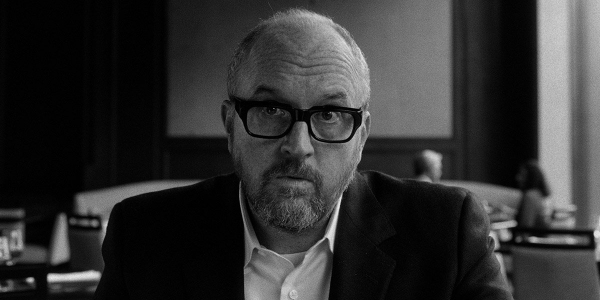
Bonus Offense (Unreleased): I Love You, Daddy
The story of I Love You, Daddy seems like it was ripped from the pages of an unpublished Terry Southern novel: after the financial misfortune of Horace and Pete (a miniseries originally released on a Saturday without any press), Louis CK decided to put all his money toward a new passion project. Shot on 35mm black-and-white film, this semi-autobiographical flick would address CK’s fears as a dad in showbiz and the “rumors” about him being a giant sex creep. Because the film was just an extended exercise in gaslighting (“If there’s one thing I learned, it’s that never think you know anything about somebody else or think that you can judge anybody on their private life,” rambles Glen, the CK proxy), and because CK admitted he was in fact a giant sex creep a week before the film’s release, I Love You, Daddy was shelved.
While many fans grappled with their feelings of betrayal and desire to see this film, I have to say: you ain’t missing anything. Like Birdman, I Love You, Daddy gives us a flawed, middle-aged male genius professionally and personally antagonized by another difficult male creative—all while surrounded by un-creative harpies and dumb sluts who drag our man even further down. This is particularly offensive because CK’s “supporting actresses”—Edie Falco, Chloë Grace Moretz, Pamela Adlon, and Rose Byrne—are far more accomplished thespians than CK, whose dramatic range is limited to either sighing or twitching his chin. The women in Glen’s life are not dissimilar to Milo Yiannopolis, looking fabulous while spouting contrarian arguments about received wisdom on female sexuality and consent. While lying in bed with Glenn, Byrne’s pregnant actress Grace Cullen tries to argue that age is just a number. (This is “edgy” because that’s what old men tell young women at bars.) To say that these stupid talking points are proof of CK’s true feelings or indicate something a real woman has seriously said in an intimate setting is giving CK and co-writer Vernon Chatman too much credit. I Love You, Daddy is a series of incomplete and contradictory thoughts, both totally on the nose and completely muddled. The rushed, messy nature of the project is evident: scenes are blocked like a TV show, and numerous sloppy edits barely cover up continuity errors. (Always the film fan, CK throws in a split diopter shot and some Gershwin-lite music to show he’s a genius just playing a t-shirted slob.) CK’s regular DP Paul Koestner does a poor job of utilizing 35mm, especially when lighting black actors: when Glen’s daughter’s friend Zasha (Ebonee Noel) admits that she wanted to fuck him when she was 14, her face is barely illuminated—a perfect encapsulation of how clueless this thing always was. —VL
